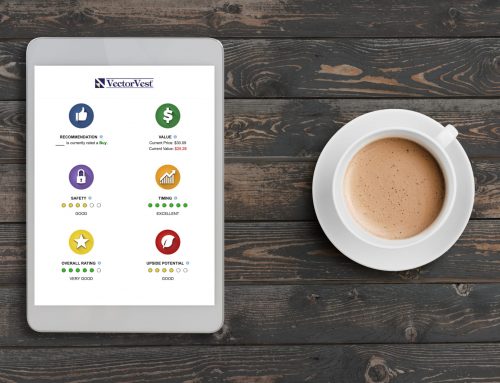In the world of investing, diversification is often touted as a key strategy for managing risk and maximizing returns. But for many retail investors, the concept of diversification can seem abstract or overwhelming. By leveraging sector analysis and tools like VectorVest, investors can create a well-balanced portfolio that stands the test of time. In this article, we’ll explore how to use sector analysis to build a diversified portfolio that aligns with your investment goals.
Understanding Sector Analysis
At its core, sector analysis involves dividing the stock market into distinct sectors, each representing a specific area of the economy. Common sectors include technology, healthcare, financials, consumer discretionary, and energy, among others. By analyzing these sectors, investors can gain insights into broader economic trends and identify potential opportunities for growth or areas of risk.
The Importance of Diversification
Diversification is crucial because it helps spread risk across different areas of the market. When one sector underperforms, others may offset those losses, leading to more stable overall returns. However, true diversification goes beyond simply owning stocks in different sectors; it involves understanding the relationships between sectors and how they react to various economic conditions.
For example, during periods of economic growth, cyclical sectors like technology and consumer discretionary often outperform. In contrast, defensive sectors like utilities and consumer staples tend to perform better during economic downturns. By balancing your portfolio across these different types of sectors, you can potentially reduce volatility and improve long-term performance.
Using Stock Analysis Tools for Sector-Based Portfolio Construction
Platforms like VectorVest typically offer several tools that can aid in sector-based portfolio construction:
- Sector analysis features: These provide an overview of sector performance, helping you identify trends and potential opportunities.
- Industry group analysis: Within each sector, you can often drill down into specific industry groups to find promising areas for investment.
- Stock Screening: VectorVest offers screening tools to find the best stocks within each sector, often using proprietary metrics to evaluate stocks.
Step-by-Step Guide to Building a Diversified Portfolio
Assess the Current Market Environment
Begin by analyzing the current market conditions. Look at major indices like the S&P 500, Nasdaq, and Dow Jones Industrial Average to gauge overall market sentiment. Pay attention to economic indicators such as GDP growth, unemployment rates, and inflation. These metrics can offer insights into whether the market is in a bullish, bearish, or neutral phase.
If the S&P 500 has been steadily rising and economic data indicates strong growth with low unemployment, you might consider a more aggressive approach. Conversely, if indicators point to a recession, you may want to adopt a conservative strategy.
Identify Top-Performing Sectors
Use sector analysis tools like the S&P Sector SPDR ETFs or Morningstar’s sector performance reports to identify sectors that are outperforming. Focus on sectors with strong earnings growth, positive momentum, and favorable analyst ratings.
During a tech boom, sectors like Technology and Communication Services might outperform others. If technology stocks are showing consistent gains and positive earnings reports, consider increasing your exposure to these sectors.
Analyze Sector Correlations
Research the correlations between different sectors to understand how they move relative to one another. Low correlation means that when one sector is down, another might be up, which helps balance your portfolio.
Historically, sectors like Utilities and Consumer Staples have low correlations with Technology and Consumer Discretionary. Including a mix of these sectors can reduce the overall volatility of your portfolio.
Allocate Assets Across Sectors
Start with a base allocation that mirrors a broad market index like the S&P 500. From there, adjust your allocations based on your market analysis and personal risk tolerance. In a high-interest-rate environment, sectors like Financials, Energy, and Consumer Staples often perform well, as they can better manage or benefit from higher borrowing costs and inflationary pressures.
If your analysis indicates a high-interest-rate environment, you might allocate 30% to Financials, 25% to Consumer Staples, 20% to Energy, 15% to Healthcare, and 10% to Utilities. Financials can benefit from higher interest margins, Consumer Staples are generally resilient as they provide essential goods, and Energy stocks often perform well during periods of inflation.
Select Individual Stocks
Within each chosen sector, use VectorVest’s stock screening tool to identify high-quality stocks. Look for stocks with strong earnings growth, solid balance sheets, and positive technical indicators like rising moving averages.
What are Moving Averages?
A moving average is a stock’s average price over a specific period, such as 20, 50, or 200 days. It’s a popular technical indicator used to smooth out price data and identify trends. A rising moving average indicates that the stock’s price has been trending upward over the period in question.
Types of Moving Averages:
- Simple Moving Average (SMA): This is calculated by adding up the stock’s closing prices over a set number of days and then dividing by that number of days. For example, a 50-day SMA is the average of the last 50 closing prices.
- Exponential Moving Average (EMA): This gives more weight to recent prices, making it more responsive to new information compared to the SMA.
How to Identify Rising Moving Averages:
- Step 1: Choose your time frame (e.g., 20-day, 50-day, or 200-day moving average). Shorter periods like 20 or 50 days are often used to identify short- to medium-term trends, while the 200-day moving average is typically used for long-term trends.
- Step 2: Use a stock charting tool (such as TradingView, Yahoo Finance, or your brokerage’s platform) to plot the moving average on a stock’s price chart.
- Step 3: Look at the slope of the moving average line on the chart:
- Rising Moving Average: If the line is sloping upwards, it indicates that the stock’s price has been increasing over the chosen period, which is a positive signal.
- Crossover Strategy: A common method is to look for a “golden cross,” where a short-term moving average (like the 50-day SMA) crosses above a long-term moving average (like the 200-day SMA). This crossover is often seen as a bullish signal.
Let’s say you’re analyzing Apple (AAPL) stock. If the 50-day SMA is sloping upwards and has recently crossed above the 200-day SMA, this could indicate a strong bullish trend, making it a potentially good time to consider buying.
Why It Matters:
Rising moving averages indicate positive momentum, suggesting that a stock is in an upward trend. By incorporating this into your analysis, you can identify stocks that have the potential to continue appreciating in value.
Monitor and Rebalance
Regularly review your portfolio to ensure it remains aligned with your investment goals. If your Technology sector allocation has grown significantly due to strong performance, you may need to rebalance by selling some tech stocks and buying into underperforming sectors like Healthcare or Consumer Staples to maintain diversification.
Conclusion
Creating a diversified portfolio through sector analysis is a powerful strategy for retail investors looking to manage risk and capture opportunities across the market. By utilizing stock analysis tools for sector analysis, industry group analysis, and stock screening, investors can build portfolios that are well-positioned for various market conditions.
Remember, diversification doesn't guarantee profits or protect against losses, but it can help manage risk and potentially improve long-term returns.
By integrating sector analysis into your investment approach, you'll be better equipped to navigate market cycles, capitalize on emerging trends, and build a robust portfolio aligned with your financial objectives.
Happy investing!
Want These Types of Insights at Your Fingertips so You Can Win More Trades?
Use VectorVest to analyze any stock free. VectorVest is the only stock analysis tool and portfolio management system that analyzes, ranks and graphs over 18,000 stocks each day for value, safety, and timing and gives a clear buy, sell or hold rating on every stock, every day.
Before you invest, check VectorVest! Click here to ANALYZE ANY STOCK FREE and see our system in action!











Leave A Comment